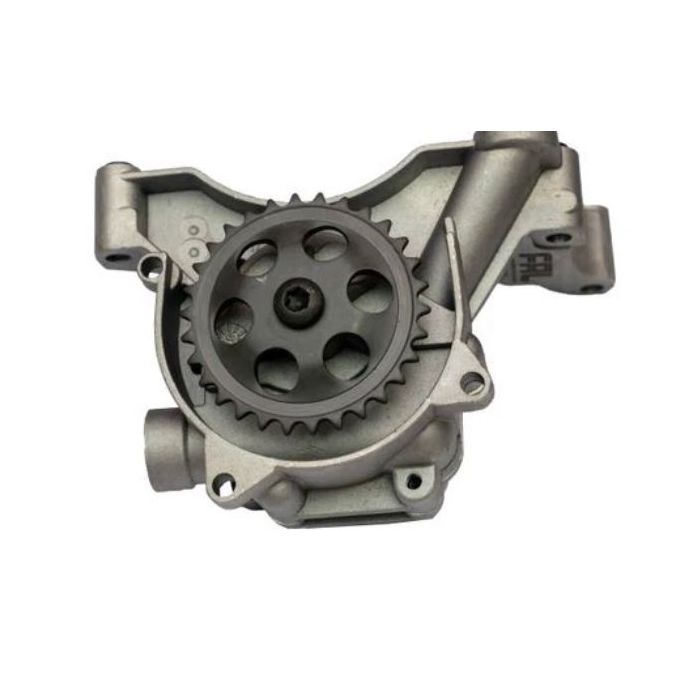Depend on a premium clp engine for heavy-duty use.
Depend on a premium clp engine for heavy-duty use.
Blog Article
Just How a Clp Engine Can Enhance Efficiency in Numerous Industries
The advent of CLP engines marks a significant shift in functional performance across different sectors, driven by their capability to maximize fuel intake and lessen downtime. As companies significantly prioritize sustainability along with performance, the role of CLP engines ends up being even much more crucial.
Summary of CLP Engines
CLP engines, or Constant Liquid Propellant engines, represent a substantial innovation in propulsion technology, particularly for space applications. These engines use a continuous feed system that permits the sustained expulsion of propellant, bring about improved efficiency and efficiency contrasted to conventional strong or hybrid propulsion systems. By maintaining a consistent circulation of liquid propellant, CLP engines can attain more exact thrust control, which is vital for steering spacecraft in different mission scenarios.
The layout of CLP engines integrates sophisticated materials and innovative gas administration systems. clp engine. This leads to minimized weight and raised integrity, important aspects for long-duration room goals. The continuous procedure decreases the threat of combustion instability, an usual difficulty in standard rocket engines.

Advantages in Production
The production of Continual Liquid Propellant (CLP) engines presents several significant advantages that improve both effectiveness and cost-effectiveness. Among the main benefits is the structured manufacturing process, which lowers the complexity related to standard propulsion systems. By using fluid propellant, manufacturers can attain greater precision in engine efficiency, resulting in optimized power output and decreased waste.
In addition, CLP engines promote a higher degree of modularity, permitting for easier assimilation right into various production lines. This versatility can considerably decrease preparations and boost overall functional flexibility. The usage of CLP modern technology likewise tends to reduce the demand for substantial maintenance due to fewer relocating parts, which converts right into decreased downtime and operational expenses.

Applications in Logistics
Leveraging Continual Fluid Propellant (CLP) engines in logistics uses significant benefits in functional effectiveness and dependability. These engines give a durable remedy for numerous transport demands, allowing the seamless activity of products across huge distances. The inherent style of CLP engines enables consistent power result, which translates right into smoother and much more foreseeable transport schedules.
One of the key applications of CLP engines in logistics remains in sturdy blog here freight transport, where they can drive both ground and airborne lorries. Their capability to keep high efficiency under differing tons problems guarantees that distribution timelines are fulfilled, therefore enhancing customer fulfillment. In addition, CLP engines can be incorporated into automated logistics systems, facilitating real-time monitoring and enhancing course planning.
Additionally, the durability of CLP engines minimizes upkeep downtime, enabling additional reading logistics business to maximize their functional capabilities. This is specifically useful in warehousing operations, where efficiency in managing and transferring items is essential. As logistics continues to develop, the assimilation of CLP engines stands for a forward-thinking strategy that not only enhances performance but also supports the industry's growing needs for integrity and rate.
Effect On Energy Efficiency
How do Constant Fluid Propellant (CLP) engines enhance energy effectiveness in transport? CLP engines utilize a regular flow of liquid fuel, maximizing combustion processes and keeping a steady drive result. This style minimizes power losses linked with conventional burning engines, where gas distribution can vary and result in ineffectiveness.
The continuous procedure of CLP engines allows for a more effective thermal cycle, leading to higher particular impulse compared to conventional engines. clp engine. This translates to minimized fuel usage for the very same quantity of job done, significantly decreasing operational prices across various transport fields, including aeronautics and maritime sectors
In addition, the capability of CLP engines to keep ideal performance under varying tons problems reduces the demand for regular acceleration and deceleration, additionally enhancing gas efficiency. Boosted energy effectiveness not only adds to cost financial savings but also brings about reduce greenhouse gas discharges, straightening with worldwide sustainability goals.
Future Trends and Innovations
Arising improvements in Continuous Liquid Propellant (CLP) engine innovation pledge to revolutionize the landscape of transportation effectiveness and sustainability. As markets pivot towards greener options, CLP engines stand at the center, incorporating innovative materials and design methods that enhance efficiency while minimizing ecological effect.
Among one of the most encouraging patterns is the adoption of crossbreed systems that integrate CLP engines with sustainable power resources. This harmony can maximize gas consumption and decrease exhausts, lining up with global sustainability objectives. Moreover, advancements in computational fluid characteristics (CFD) are promoting the style of even more aerodynamically reliable engines, resulting in decreased drag and enhanced gas effectiveness.
Furthermore, the advancement of wise tracking systems is readied to boost operational efficiencies. These systems utilize data analytics and IoT technology to optimize engine performance in real-time, making certain that this article the engines run within their most reliable criteria.
As research proceeds to check out different propellant solutions-- such as biofuels and synthetic gas-- the future of CLP engines looks appealing. By harnessing these developments, industries can not just improve their effectiveness yet additionally contribute substantially to a cleaner, extra sustainable future in transportation.
Conclusion
Finally, CLP engines stand for a significant advancement in efficiency throughout multiple sectors. Their capacity to enhance fuel intake and reduce functional prices, combined with a constant feed system, enhances power outcome and operational integrity. The assimilation of sophisticated materials and less relocating parts reduces upkeep requirements, while positioning with sustainability goals placements CLP engines as a crucial technology for the future. Proceeded development in this area promises further enhancements in efficiency and ecological performance.
Report this page